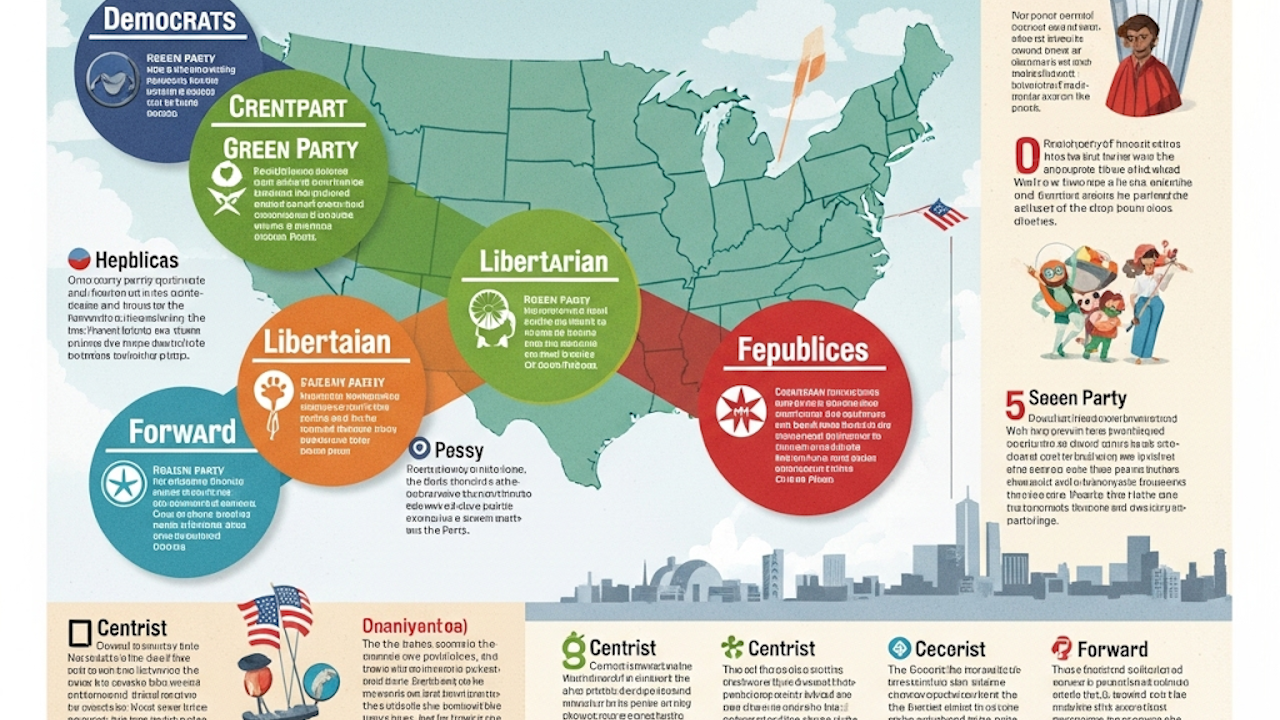The United States has long been dominated by a two-party system, with the Democratic and Republican parties controlling the vast majority of political power at both the national and state levels. This system has shaped American politics, elections, and governance in significant ways. But what if the U.S. had more than two major political parties? How would the dynamics of government, representation, and policymaking change? Exploring this hypothetical scenario opens the door to understanding how the structure of political competition impacts democracy.
One of the most immediate effects of a multiparty system would be an increase in political representation. In the current system, many Americans feel forced to choose between two parties that may not fully reflect their values or interests. Third parties like the Libertarians, Greens, or independents often struggle to gain traction because of structural disadvantages like the first-past-the-post electoral system and winner-take-all districts. If the U.S. had more than two viable parties, voters would have more options, and elected officials would better reflect the diverse ideologies and priorities of the electorate. People with strong views on environmental protection, libertarian economics, democratic socialism, or other platforms could vote for parties that align closely with their beliefs, without worrying about “wasting” their vote.
With more parties competing for seats, coalition governments would likely become the norm. In many parliamentary democracies with multiparty systems, such as Germany or the Netherlands, no single party usually wins an outright majority. Instead, parties must form coalitions to govern. This often requires negotiation and compromise, which can lead to more moderate and widely supported policies. In the U.S., a similar setup could encourage cross-party collaboration and discourage the kind of extreme partisanship that has become more common in recent years. Policymaking might slow down due to the need for broader consensus, but it could also become more thoughtful and representative.
However, the transition to a multiparty system would also bring challenges. The U.S. Constitution does not outline how political parties should function, but the current electoral framework is tailored to a two-party model. Changing this would require reforms to the way elections are conducted. One possibility is adopting proportional representation, where parties gain seats in proportion to the votes they receive. Another is ranked-choice voting, which allows voters to rank candidates in order of preference. These systems make it easier for smaller parties to win representation and would likely be essential for supporting a viable multiparty landscape.
Even with electoral reform, governing in a multiparty system can be complicated. Coalition governments can be fragile, especially when the parties involved have significant ideological differences. Disagreements over key issues can lead to unstable governments, frequent elections, or gridlock. While compromise is necessary, it can also dilute policy proposals, leading to decisions that satisfy no one completely. In times of national crisis or emergency, the need for swift action might clash with the slow, consensus-driven pace of coalition politics.
Still, a multiparty system might help address some of the deep polarization that characterizes U.S. politics today. With only two dominant parties, political identity often becomes binary and oppositional. You’re either with one side or the other, which leaves little room for nuance or common ground. A broader party spectrum would blur these lines and could make political discourse less hostile. People might be less likely to view opponents as enemies if there were multiple ideological perspectives represented in government. This could help rebuild trust in institutions and foster a healthier political culture.
Media coverage and political debates would also evolve. Currently, much of the political conversation revolves around Democratic versus Republican talking points. With more parties in the mix, media outlets would need to cover a wider range of viewpoints, and debates would likely include more participants. This could enrich the public’s understanding of policy issues, but it might also make it harder for voters to sort through the noise. Greater diversity in political messaging could lead to a more informed electorate, but it would require voters to engage more actively in the democratic process.
Campaign financing and political fundraising would also shift. Under the current model, the two major parties attract the vast majority of donations and resources. With multiple competitive parties, fundraising efforts would be more spread out, potentially reducing the overwhelming influence of a few wealthy donors. However, it might also make campaigns more expensive overall, as more parties compete for limited attention and funding.
Ultimately, a U.S. political system with more than two major parties could create a more inclusive, dynamic, and responsive democracy. It would give voice to a wider array of perspectives, encourage compromise, and reduce the zero-sum nature of political competition. But it would also require significant structural changes, cultural adjustments, and a commitment to new forms of political cooperation. Whether or not the country ever makes such a shift, imagining a multiparty future helps highlight the strengths and limitations of the current system. It invites Americans to consider what kind of democracy they want, and what they might need to do to achieve it.

